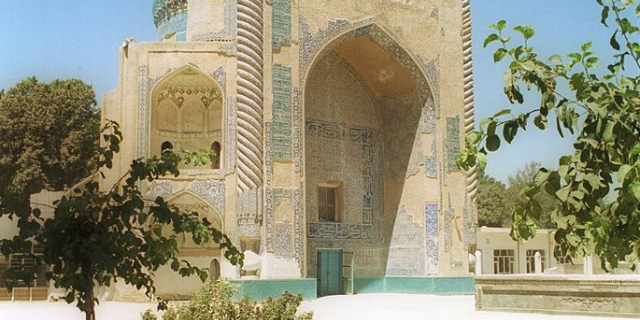Band-e Amir National Park (Pashto & Persian: بند امیر) is a national park in Afghanistan. It was established on 22 April 2009 as Afghanistan's first national park to promote and protect the natural beauty of a series of intensely blue lakes created by natural dams high in the Hindu Kush. Band-e-Amir is a chain of six lakes in the mountainous desert of central Afghanistan. The lakes formed from mineral-rich water that seeped out of faults and cracks in the rocky landscape. Over time, the water deposited layers of hardened mineral (travertine) that built up into walls that now contain the water. According to the Wildlife Conservation Society, who helped the Afghan government set up the park, Band-e-Amir is one of the few travertine systems in the world.
They were created by the carbon dioxide rich water oozing out of the faults and fractures to deposit calcium carbonate precipitate in the form of travertin...Read more
Band-e Amir National Park (Pashto & Persian: بند امیر) is a national park in Afghanistan. It was established on 22 April 2009 as Afghanistan's first national park to promote and protect the natural beauty of a series of intensely blue lakes created by natural dams high in the Hindu Kush. Band-e-Amir is a chain of six lakes in the mountainous desert of central Afghanistan. The lakes formed from mineral-rich water that seeped out of faults and cracks in the rocky landscape. Over time, the water deposited layers of hardened mineral (travertine) that built up into walls that now contain the water. According to the Wildlife Conservation Society, who helped the Afghan government set up the park, Band-e-Amir is one of the few travertine systems in the world.
They were created by the carbon dioxide rich water oozing out of the faults and fractures to deposit calcium carbonate precipitate in the form of travertine walls that today store the water of these lakes. Band-e Amir is one of the few rare natural lakes in the world which are created by travertine systems. The site of Band-e Amir has been described as Afghanistan's Grand Canyon, and draws thousands of tourists a year. The river is part of the system of the Balkh River.
The name Band-e Amir literally means "the Ruler's Dam" in Dari which is believed by some to be a reference to Ali, the fourth Caliph of the Muslims. The area is dominated by ethnic Hazaras, who are estimated to make up about 0.8 percent of Afghanistan's population.[1]
In her 1970 guide to Afghanistan, American-Afghan historian Nancy Dupree wrote that a full description about Band-e Amir would "rob the uninitiated of the wonder and amazement it produces on all who gaze upon it".[2] Parts of the 1975 Bollywood film Dharmatma, with Feroz Khan and Hema Malini, were filmed at the Band-e Amir National Park.[3]
In 2004, Band-e Amir was submitted for recognition as a World Heritage site.[4] Efforts to make Band-e Amir a national park started in the 1970s, but were then put on hold due to the wars.[5] In April 2009, Band-e Amir was finally declared Afghanistan's first national park.[6] In 2013, about 6,000 local tourists were annually visiting the Band-e Amir National Park. The area is protected by a small number of park rangers.[7]




























Add new comment